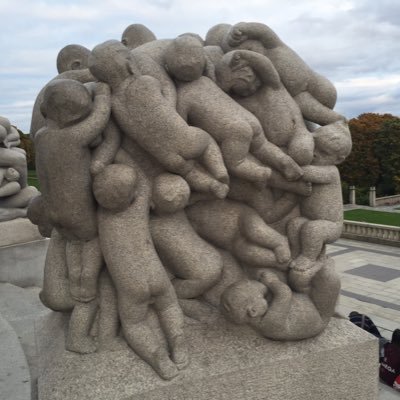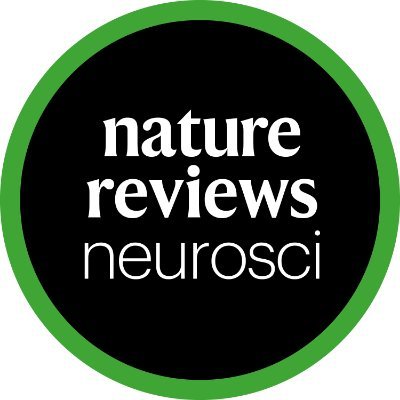
Jaeeon Lee
@_JaeeonLee_
Followers
675
Following
3K
Media
11
Statuses
681
Postdoc in @naoshigeuchida's lab, Harvard @MCB_Harvard former Ph.D student in @blsabatini lab
Cambridge
Joined December 2017
Our perspective with @blsabatini on the function of striatal indirect pathway is out! We discuss many ideas including dopamine dependent learning rule, action switching etc. We hope this can inspire new experiments moving forward!
3
8
36
🧠A week from today, join us @MIT for "Circuits of Survival and Homeostasis." It will be a fascinating day of talks about the links between body and brain. https://t.co/wUL4rUowy8
0
1
2
Our latest led by @TVKamath with important contributions by collaborators including Nao Uchida, Mitsuko Watabe-Uchida and @LinTianPhD Hunger modulates exploration through suppression of dopamine signaling in the tail of the striatum: Neuron
cell.com
Kamath et al. examine the neural mechanism by which hunger makes animals take more risks. They show that hunger neurons in the hypothalamus suppress threat and salience-related dopamine signals in...
2
14
59
Excited to share our preprint on how dopamine neurons perform the key calculations in reinforcement learning! https://t.co/vbPZCkjPCj
3
19
44
We are very excited to announce our new study https://t.co/GUd34dYx3Q led by recently minted PhD @RichieHakim. He first developed FaceRhythms to break down videos of facial behaviors into interpretable spatial-spectral components and then showed that these are highly ...
biorxiv.org
Animals, including humans, use coordinated facial movements to sample the environment, ingest nutrients, and communicate. To study these behaviors and the neural signals that underlie them, we...
2
10
62
How Mice Make Foraging Decisions: Uchida Lab Reveals Neural Mechanism Underlying “Stay or Go” Choices @malcgcamp @lylekingsbury @momchiltomov @RachelleGaudet @HyungGoo_Kim @jdrugowitsch @scott_linderman @harvardbrainsci @HarvardGSAS @DulacLab @Harvard
https://t.co/RdeC18NJH6
0
2
11
Excited to share my postdoctoral work, with Ilana Witten and @scott_bolkan at @PrincetonNeuro. TL;DR - we show that two basal ganglia pathways oppositely affect decision-making by very precise control of cortical subpopulations that encode accumulated sensory evidence.
Striatal pathways oppositely shift cortical activity along the decision axis https://t.co/UYiEaUgMXd
#biorxiv_neursci
11
14
65
congrats Shun and the team !!! awesome work
Can synapses in the brain switch their signs between excitatory and inhibitory during learning🚦? Can they act more like weights in artificial neural networks, able to switch signs based on experience 🔃? Excited to share my thesis work in @blsabatini lab! 🧵 ⬇️ (1/13)
1
0
1
🚨I’m excited to share that the first piece of my postdoc work with @MarkHowe72 is out! 🧵⬇️ https://t.co/UnP9OpMZxn
nature.com
Nature Communications - Functional roles of natural acetylcholine (ACh) dynamics are not fully understood. This study reveals dynamic changes in ACh release across the mouse striatum during...
4
12
34
From avoidance to new action: the multifaceted role of the striatal indirect pathway — Perspective by Jaeeon Lee & Bernardo L. Sabatini @_JaeeonLee_ @blsabatini
https://t.co/ITysUI0BKq
nature.com
Nature Reviews Neuroscience - The functional roles of the striatal indirect pathway remain unclear. In this Perspective, Lee and Sabatini propose that a three-factor learning rule governs the...
0
10
40
Congrats to Kim Reinhold, soon to launch her own group in the Eaton Peabody Labs, on this labor of love. Basically, she shows that the visually recipient zone of the striatum mediates outcome-dependent trial to trial updates of behavior. https://t.co/kDSBN1yRdf
nature.com
Nature - Activity in the striatum is necessary for trial-to-trial improvements in learning sensory–motor tasks but not memory recall.
7
16
103
Review by @_JaeeonLee_ on the function of the indirect pathway in action selection, devaluation, and switching. https://t.co/i1a0ygl7Bw
0
8
55
I’m so excited to share our preprint on how brainstem neurons sense and integrate multiple body signals during food consumption. We imaged 1000s of neurons across the lateral parabrachial nucleus (LPBN) in behaving mice.
biorxiv.org
Studies of body-to-brain communication often examine one stimulus or organ at a time, yet the brain must integrate many body signals during behavior. For example, food consumption generates diverse...
2
30
125
🎉 Thrilled to share our latest work has today been published in its final form in 🧠 @NatureNeuro : https://t.co/DZXTzNrroj
1
8
40
Folks! We need your help to establish this platform long term for everyone! Can you help us out spread this video? https://t.co/7ktB2Og2Nv
1
27
44
Are you a neuroscience postdoc interested in an academic career? Apply by 05/31/25 for this invited seminar at MIT's Brain and Cognitive Sciences department! Applications are reviewed by postdoc, keeping in mind the importance of varied contributions to the scientific community!
0
7
24
Many neuroscience students are steeped in an experiment-first style of thinking that leads to “random walk science.” Let’s not forget how theory can guide experiments towards deeper insights, writes @gershbrain. https://t.co/nFC1xNmjhk
thetransmitter.org
Many neuroscience students are steeped in an experiment-first style of thinking. Let’s not forget how theory can guide experiments.
1
22
56
Thrilled to announce that my PhD work has been officially published in @Nature! https://t.co/DAktxeViIB 🧵🧵🧵🧵🧵🧵 1/8
7
24
150























